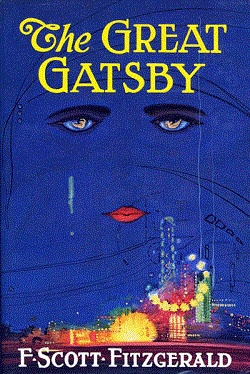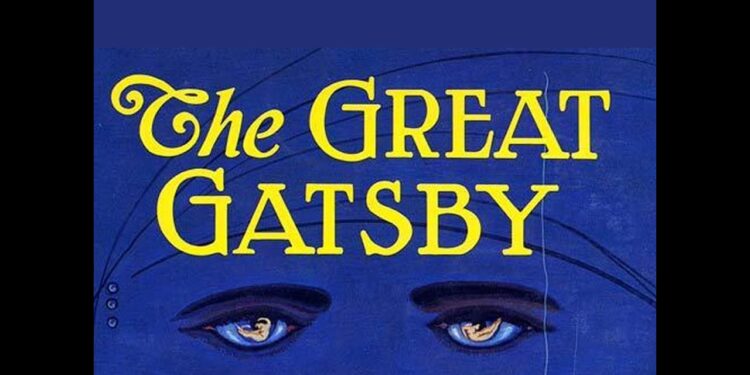Introduction
The Great Gatsby summary By F. Scott Fitzgerald The Great Gatsby, published in 1925, is a seminal work of American literature by F. Scott Fitzgerald. Set during the Jazz Age on Long Island in New York, it explores themes of the American Dream, social stratification, idealism, and disillusionment. The novel tells the tragic story of Jay Gatsby, a mysterious millionaire who is obsessed with rekindling a romance with Daisy Buchanan, a woman he loved five years prior.
The narrative unfolds through the perspective of Nick Carraway, a young man from the Midwest who comes to New York in 1922 to pursue a career in bond trading. Nick rents a small house next to Gatsby’s mansion in West Egg, a wealthy but new-moneyed part of Long Island, and becomes entangled in the lives of the Buchanans, Daisy and her husband, Tom, as well as Gatsby’s obsessive pursuit of a past romance with Daisy.
As a reflection of the era, the novel critiques the pursuit of material success, the moral decay of the wealthy elite, and the illusion of the American Dream. Gatsby, the novel’s tragic hero, is ultimately destroyed by his unrelenting desire for a future that can never be recaptured—a future that revolves around an idealized version of Daisy, the woman he cannot have.
Plot Summary
Nick Carraway’s Arrival and Introduction to Gatsby
The novel begins with Nick Carraway narrating his arrival in West Egg in the summer of 1922. Nick has recently moved from the Midwest to New York to work in the bond business. He rents a modest house next to Jay Gatsby’s grand mansion. Nick’s cousin, Daisy Buchanan, lives in East Egg, a more fashionable area known for its old-money residents. Daisy is married to Tom Buchanan, a wealthy and arrogant man. Nick frequently visits the Buchanans, where he learns about their troubled marriage and complex social lives.
Tom, although wealthy and powerful, is openly unfaithful to Daisy. He is having an affair with Myrtle Wilson, a woman from the lower classes, whom he treats with disdain. Daisy, for her part, seems to be aware of Tom’s infidelity but remains with him for reasons of wealth and social status. Daisy’s emotional distance from Tom becomes clear, and Nick feels sympathy for her.

Nick is soon drawn into the mystery of his neighbor, Jay Gatsby, whose wealth, eccentricity, and lavish parties intrigue him. Gatsby is known for hosting extravagant gatherings every weekend at his mansion, where the rich and famous gather, though no one truly knows much about him. Gatsby’s elusive nature makes him a subject of gossip and fascination. Some say he is a war hero; others suggest darker secrets about his past.
Read More
The Past of Jay Gatsby
Over time, Nick learns more about Gatsby through his interactions with him. Gatsby is revealed to be a self-made millionaire who came from humble beginnings. His birth name was James Gatz, and he was born to poor farmers in North Dakota. At a young age, Gatsby reinvented himself after meeting a wealthy copper magnate named Dan Cody, who took him under his wing and exposed him to the world of wealth and luxury.
Gatsby’s sole motivation in amassing wealth is to win back Daisy Buchanan, the woman he fell in love with while stationed in Louisville during World War I. Daisy, who was initially enamored with Gatsby, ultimately married Tom because Gatsby was poor and lacked the social status to provide the kind of life Daisy desired. The loss of Daisy is what drives Gatsby’s ambition to rise above his origins and attain wealth and status.
Despite Daisy’s marriage to Tom, Gatsby never stopped loving her, and he dreams of rekindling their relationship. Gatsby’s belief in the possibility of reclaiming the past is central to his character. He believes that if he can show Daisy his wealth and success, she will leave Tom and return to him. Gatsby spends his life in pursuit of this ideal, throwing lavish parties, hoping that Daisy will one day appear at his door.
The Reunion of Gatsby and Daisy
Through Nick’s connection with the Buchanans, Gatsby arranges a meeting with Daisy at Nick’s house. The reunion is awkward but emotionally charged, as the old feelings between Daisy and Gatsby quickly resurface. Over the following weeks, Gatsby and Daisy begin an affair, and Gatsby begins to believe that Daisy will soon leave Tom to be with him.
However, Daisy’s feelings for Gatsby are more complicated than he realizes. She loves him, but she is also deeply attached to her life with Tom. Tom, meanwhile, becomes increasingly suspicious of Daisy’s relationship with Gatsby. He confronts Gatsby and exposes the truth about Gatsby’s humble origins, accusing him of being a fraud who has made his money through illegal means. Gatsby’s desperate attempts to convince Daisy to leave Tom fall apart in the face of Tom’s forceful authority and control over Daisy’s life.
The Tragic Confrontation
The tension between Gatsby, Daisy, and Tom comes to a head when all three, along with Nick and Jordan Baker (a friend of Daisy’s), spend the day in New York City. During a confrontation at a hotel, Tom openly challenges Gatsby’s version of events, revealing that Gatsby is a self-made man whose wealth is tainted by criminal activity. Daisy, torn between the two men, ultimately chooses to remain with Tom. Gatsby, believing that Daisy will leave Tom and join him, is devastated.
Meanwhile, George Wilson, Myrtle’s husband, learns that it was Gatsby’s car that struck and killed his wife. George, devastated by the loss, believes that Gatsby himself was responsible for Myrtle’s death. In a tragic twist, he tracks down Gatsby at his mansion and shoots him while Gatsby is relaxing by his pool. Afterward, George takes his own life.
Nick’s Reflection on Gatsby and the American Dream
Nick Carraway is left to grapple with the aftermath of Gatsby’s death. Daisy and Tom, who were responsible for the events leading up to the tragedy, retreat into their wealth and privilege, leaving Nick to handle the funeral arrangements. Gatsby’s death symbolizes the final destruction of his idealized dream and the emptiness of the pursuit of wealth and status. None of Gatsby’s friends or party guests come to his funeral, showing the superficiality and moral decay of the world Gatsby tried so hard to infiltrate.
Read More
In the novel’s final chapters, Nick reflects on the tragedy of Gatsby’s life and the emptiness of the American Dream. Gatsby’s unrelenting pursuit of an ideal future with Daisy represents the broader disillusionment with the American Dream—the belief that anyone, regardless of their social background, can achieve success and happiness through hard work. Nick concludes that Gatsby’s dream was ultimately doomed, not only because of his inability to escape the past but also because the American Dream itself is a myth.
Themes in The Great Gatsby
- The American Dream
- The central theme of The Great Gatsby is the critique of the American Dream—the idea that success is attainable for anyone through hard work and ambition. Gatsby’s rise from humble beginnings to immense wealth is meant to symbolize the dream’s promise, but his failure to win Daisy’s love and his eventual death expose the emptiness of this dream. The novel suggests that the American Dream is a hollow pursuit, particularly for those like Gatsby who build their success on illusion and crime.
- Class and Social Stratification
- The novel contrasts old money (represented by Tom and Daisy Buchanan) with new money (represented by Gatsby). Despite his wealth, Gatsby is never truly accepted by the East Egg elite because he lacks their inherited status. This division highlights the rigid social structures of the time and underscores the idea that wealth alone is not enough to achieve social acceptance. The novel critiques the superficiality of the upper class, particularly their lack of morality and their inability to see beyond their privilege.
- The Illusion of the Past
- Gatsby’s obsession with recreating his past with Daisy is one of the novel’s central themes. Gatsby believes that he can turn back time and relive the romantic ideal of their early love, but the novel ultimately suggests that the past is irretrievable. Nick’s reflections on Gatsby’s inability to live in the present and his fixation on the idealized past demonstrate the futility of trying to recreate lost dreams.

- Love, Desire, and Obsession
- Gatsby’s love for Daisy is the driving force of the novel, but it is an obsessive, one-sided love that blinds him to Daisy’s true character and her current life with Tom. Gatsby’s idealization of Daisy is a form of romanticism that disregards the reality of their relationship. The novel explores how idealized love can be destructive, especially when it is rooted in obsession and fantasy rather than mutual understanding.
Read More
- Moral Decay and Disillusionment
- Set in the 1920s, a time of excess and indulgence, The Great Gatsby critiques the moral decay of society. The wealthy characters in the novel, particularly Tom and Daisy, live without regard for the consequences of their actions. They manipulate others, betray those who care for them, and ultimately escape any repercussions because of their wealth. Nick’s disillusionment with this world reflects the larger sense of disillusionment that pervaded post-World War I America.
(FAQ)
1. What is the significance of the “green light” in The Great Gatsby?
The green light at the end of Daisy’s dock symbolizes Gatsby’s dream of a future with Daisy. It represents hope, longing, and the belief that the future can be shaped to one’s desires. However, the light also signifies the unattainable—Gatsby’s dream is forever out of reach, and the green light ultimately represents the illusory nature of his ambitions.
2. Why does Gatsby die?
Gatsby’s death is a culmination of his relentless pursuit of an idealized future with Daisy. His belief that he can recreate the past and win Daisy back leads him to overlook the reality of her relationship with Tom. His tragic end also reflects the larger theme of the novel, showing that the American Dream—built on material success and idealized ambition—is ultimately unattainable and destructive.
3. What role does Nick Carraway play in the novel?
Nick Carraway serves as the novel’s narrator and moral center. He is an outsider in the world of East Egg and West Egg, providing a more grounded perspective on the characters and their actions. Nick’s reflections on Gatsby’s life and the corruption of the American Dream serve as a critique of the society he observes. He represents the idea of moral disillusionment in the face of the excesses of the Jazz Age.
4. Is Daisy Buchanan a sympathetic character?
Daisy is a complex and contradictory character. While she is beautiful and charming, she is also selfish and indecisive. She is torn between her love for Gatsby and her loyalty to Tom, and ultimately chooses to stay with Tom. Daisy embodies the superficiality and moral ambiguity of the upper class, making her both sympathetic and frustrating.
5. What is the main message of The Great Gatsby?
The Great Gatsby critiques the American Dream, showing that the pursuit of wealth and status, while promised to bring happiness and fulfillment, leads to disillusionment and tragedy. The novel examines the emptiness of the upper class, the impossibility of recapturing the past, and the destructive power of idealism and obsession.
Read More

















